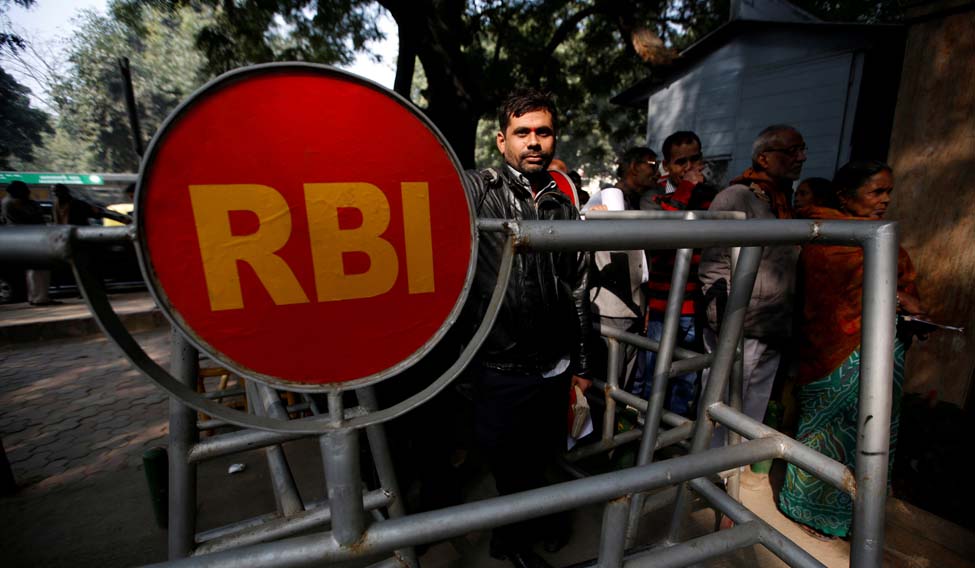The Reserve Bank of India, on Thursday, left its benchmark repo rate unchanged—at 6.25 per cent—in its first bi-monthly monetary policy announcement for the financial year 2017-18. The decision of the six-member monetary policy committee was unanimous. It comes in the backdrop of the central bank's shift to a neutral policy stance with the objective of achieving medium-term consumer inflation (CPI) target of four per cent, within a band of plus or minus 2 per cent.
“Since the February bi-monthly monetary policy statement, inflation has been quiescent. Headline CPI inflation is set to undershoot the target of 5 per cent for the fourth quarter of 2016-17. For 2017-18, inflation is projected to be an average of 4.5 per cent in the first half of the year and 5 per cent in the second half,” RBI said.
However, even as it left repo rate unchanged, it raised the reverse repo rate to 6 per cent from 5.75 per cent, as it looks to mop up the excess liquidity in the system.
Repo rate is the rate at which RBI lends funds to commercial banks, while reverse repo is the rate that the RBI offered banks which deposited their surplus funds with the central bank.
“Following demonetisation, a persistently large liquidity surplus has impacted the banking system. RBI has absorbed the surplus liquidity using a mix of both conventional and unconventional instruments to ensure that the money market rates remain aligned to the repo rate. RBI is committed to reverting system liquidity to a position closer to neutrality, consistent with the stance of monetary policy,” the central bank said.
Over the last few months, deposit growth has remained high, but credit demand across sectors remains low. Recent RBI data showed that total bank credit in the fortnight ended March 17 rose just 4.36 per cent year-on-year to Rs 75.66 lakh crore, while aggregate deposits in the banking system rose 13 per cent from a year ago to Rs 105.42 lakh crore.
RBI aims to use a mix of measures including longer tenor variable reverse repo auctions, operations under the market stabilisation scheme and open market operations.
“While elevated risks to inflation might have prompted RBI to keep repo rate unchanged, narrowing gap between repo rate and reverse repo rate will help correct the bond yields and could address excess liquidity problem in the system to some extent,” said Arun Singh, lead economist, Dun & Bradstreet India.
Since January 2015, the central bank has reduced repo rates by 175 basis points. However, banks have so far transferred less than half of it to customers.
RBI Governor Urjit Patel said that while banks have reduced lending rates, "further scope for a more complete transmission of policy impulses remains, including for small savings".
Meanwhile, the RBI has raised its GDP growth forecast and now expects growth to be at 7.4 per cent in 2017-18, up from 6.7 per cent in 2016-17.
Addressing the bad loan problems in the banking sector also remains high on the central bank's agenda.
"Along with re-balancing liquidity conditions, it will be the Reserve Bank's endeavour to put the resolution of banks' stressed assets on a firm footing and create congenial conditions for bank credit to revive and flow to productive sectors of the economy,” it said.
For the first nine-months of the fiscal year ended March 31, banks' non-performing assets rose by over Rs 1 lakh crore to Rs 6.07 lakh crore.
Patel said that RBI was preparing steps to further resolve bad loans. New measures to improve bank balance sheets are expected to announced soon.
Analysts say that the central bank's statements indicate that it is concerned about the upside risks to inflation and is thus unlikely to cut repo rate further, unless inflation falls.
“RBI remains cautious on the inflation trajectory and believes that achieving the 4 per cent mark will not be easy. Seemingly, RBI remains wary of upside risks to inflation more even though it highlighted that risks are evenly balanced. We expect RBI to remain on a pause unless inflation significantly surprises on the downside and favorable global conditions evolve,” said Suvodeep Rakshit, senior economist, Kotak Institutional Equities.





